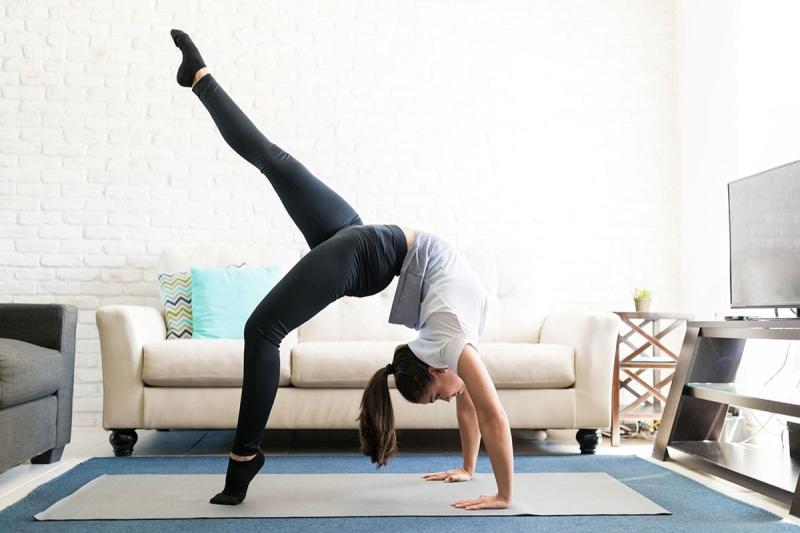Although the terms are frequently used interchangeably, flexibility training and mobility training possess distinctive characteristics. Typically, flexibility is a passive activity, such as stretching a muscle group to its maximum extent. In flexibility training, your primary objective is to lengthen your muscles and connective tissues to increase your range of motion (ROM).
Alternatively, mobility is an active concept. It is the capacity to exert control over a complete spectrum of motion. Mobility training focuses on the joints, incorporating the muscles’ flexibility, strength, and stability to execute movements within their ROM safely. Mobility is essential for normal functional movement and athletic performance. Mobility includes flexibility, strength, and neuromuscular control, whereas flexibility is lengthening muscles and soft tissues. Both are essential for overall fitness and injury prevention, but their training focuses, and methods differ.
What is Flexibility Training?
Flexibility training is an essential part of getting fit. It focuses on making muscles and connective tissues around the joints longer and more flexible. Flexibility training improves your body’s ability to move through its full range of motion by slowly stretching muscles to their full length. There are different ways to train flexibility. For example, static stretching is when you hold a stretch for a long time, usually between 15 and 60 seconds. This relaxes the muscle and lets it lengthen gradually. Dynamic stretching is when you move different body parts and slowly increase your reach, speed, or both. It helps you get more flexible and is an excellent way to prepare for a busy workout.
Adding flexibility training to your workout routine can help you in many ways. It can help improve your posture, lower your chance of injury, improve your physical performance, ease muscle pain, and even help you relax and relieve stress. Also, it can help fight the stiffness and lack of movement that come with getting older or living a sedentary lifestyle. But the right way to train flexibility is significant. You could hurt yourself if you stretch too much or incorrectly. So, it’s essential to learn the proper ways to do things, move forward slowly, and pay attention to your body.
What is Mobility Training?
Mobility training is a complete way to get in shape that focuses on making moving a joint through its full range of motion easier. Mobility training differs from flexibility training because it focuses on controlling, strengthening, and stabilizing movement across a joint’s full range of motion. Most mobility training involves active, dynamic movements and may include stretches, strength training, and work on your balance. They are made to improve joint function by making joints more lubricated, getting muscles around the joint to work better, and improving nerve and muscle control. Controlled articular rotations, in which you move a joint through its full range slowly and on purpose, and dynamic stretching, in which you use movement to stretch and warm up the body, are two examples.
Mobility training is essential for functional fitness, which is the kind of fitness that helps you do everyday things and lowers your risk of getting hurt. Everyone can benefit from it, from athletes who want to improve their ability and reduce their risk of injury to older people who want to keep or regain their mobility. Doing movement training in the right form and order is essential to avoid getting hurt. It is often good to talk to a professional trainer or physical therapist to ensure your practice is safe and effective.
Difference Between Flexibility Training and Mobility Training
Increased mobility can be achieved by flexibility training, which entails the passive lengthening of muscles and soft tissues through static stretches held for a considerable time. However, mobility training is an operational procedure that aims to increase the joint’s range of motion in a safe and controlled manner. Improved joint function and neuromuscular control are among the benefits of this blend of flexibility, strength, and balance training. While flexibility refers to the length of your muscles, mobility refers to your capacity to use and manage that length. Both are essential for optimal health, injury avoidance, and practical motion. We’ve compared flexibility training to mobility training and explained the critical differences between the two workouts below.
Definition
Mobility is the ability to move a joint through its full range of motion with control and strength, while flexibility is the capacity of your muscles and connective tissues to stretch.
Focus Area
Mobility training emphasizes joint mobility, whereas flexibility training emphasizes the muscles and soft tissues around the joints.
Passive vs. Active
Static stretching is a common component of passive flexibility training. Active and dynamic mobility exercises call for full muscular participation.
Control
In contrast to flexibility training, mobility training focuses on neuromuscular control.
Strength
Unlike flexibility training, which primarily involves stretching muscles, mobility training also includes strengthening surrounding a joint.
Stability
Mobility exercises often improve joint stability. Joint stability is rarely a focus of flexibility training.
Performance Impact
Mobility exercises promote functional performance and strength. They entail movement and control, whereas flexibility exercises improve movement by allowing muscles to stretch more easily.
Applications
Mobility training is more widespread in functional fitness, sports performance, and physical therapy, while flexibility training is more common in yoga and dance.






